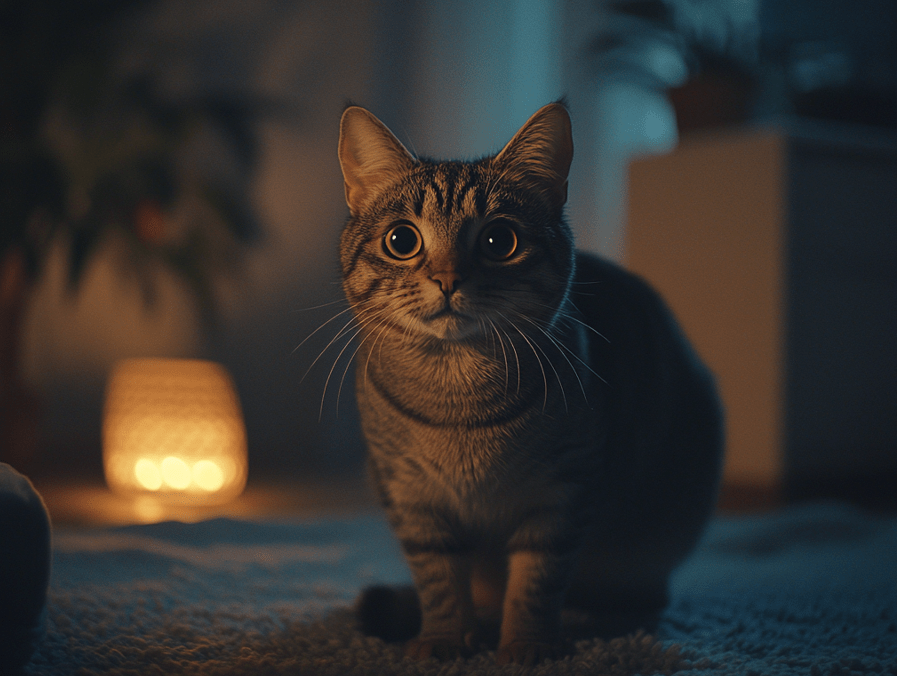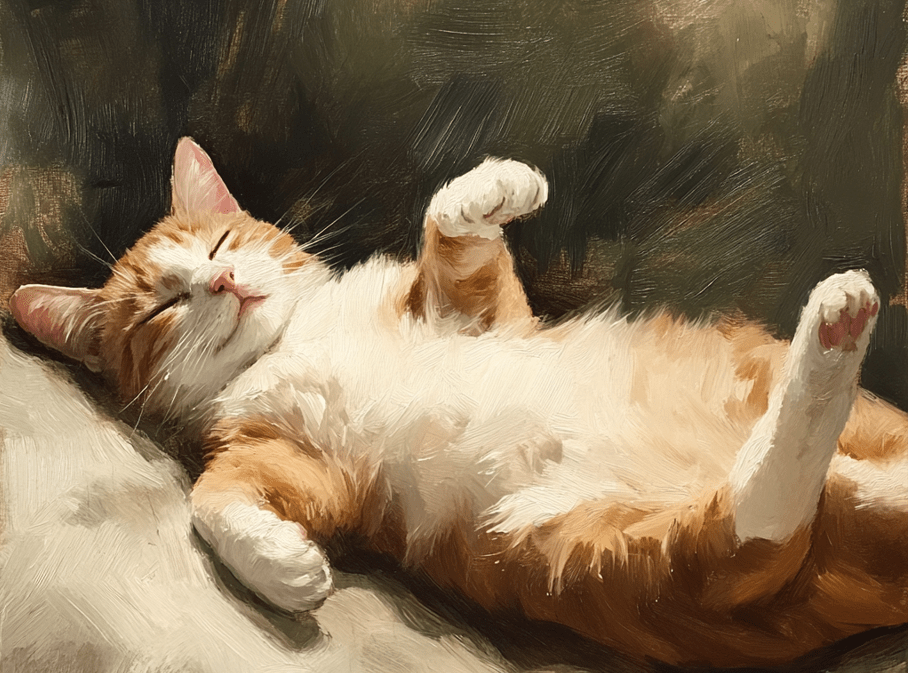
People find it hard to understand cats because these animals appear surrounded by mystery and secrets. Despite not using words they have advanced communication signals to live and bond both with other cats and humans. Getting familiar with feline communication methods enhances your bond with your cat while making it easier to detect what they need and feel. This article shows every way cats use to talk between themselves including voice sounds, body actions, smells and physical contact. You will learn all major methods that cats use to communicate by the end of this reading.
The Secret Language of Cats
When you observe two cats together you may wonder what they exchange through their actions. Cats live among others and use advanced ways to communicate in complicated ways. While dogs openly display their mood through actions and sounds cats communicate through blended methods which include smell, body language and sound. Each time a cat uses its body to speak here it serves a unique function.
This article examines how cats express themselves through behavioral interactions with other felines. You will discover essential things about feline thoughts when you learn both the sounds cats produce and their tail positions. So, let’s get started!
How Cats Communicate: The Key Methods
Cats speak to each other using multiple ways of expression. These methods split into four major groups.
1.Vocalizations
2.Body Language
3.Scent Marking
4.Tactile Communication
We will examine all these forms of communication one by one.
1.Vocalizations: More than Just Meows
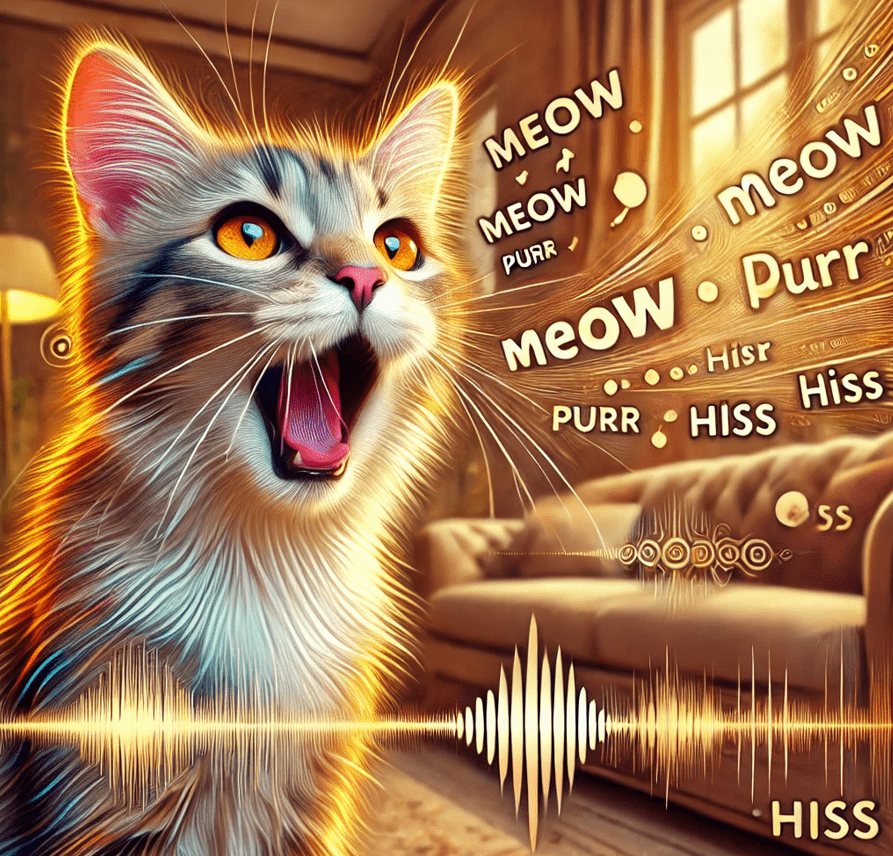
People usually associate cat communication with vocalization through meowing. Cats produce many different sounds with specific messages behind them. These are the major sounds cats produce along with their typical message:
Meowing: Adult domestic cats meow mainly to connect with humans but use this vocalization when trying to reach their mother at early life stages. The behavior shows that cats use meowing to speak to one another especially during breedings or while showing power roles.
Purring: A cat’s purring means both pleasure and indicates the animal feels pain or fear at the same time. Kittens get relaxed through mother cat purring while cats use this vocalization to support each other.
Hissing and Growling: A stressed or territorial cat warns others by producing audible warning noises.
Chirping and Chattering: Cats produce chattering notes to show their enthusiasm for prey like birds just outside the window.
Yowling: When cats make strong long-lasting sounds they use these calls to defend their area and win partners.
2.Body Language: The Silent Communicator
Cats communicate using their whole body. Their body posture plus tail movement and facial clues show how they feel and what they want to do. These details explain how to read body language in cats.
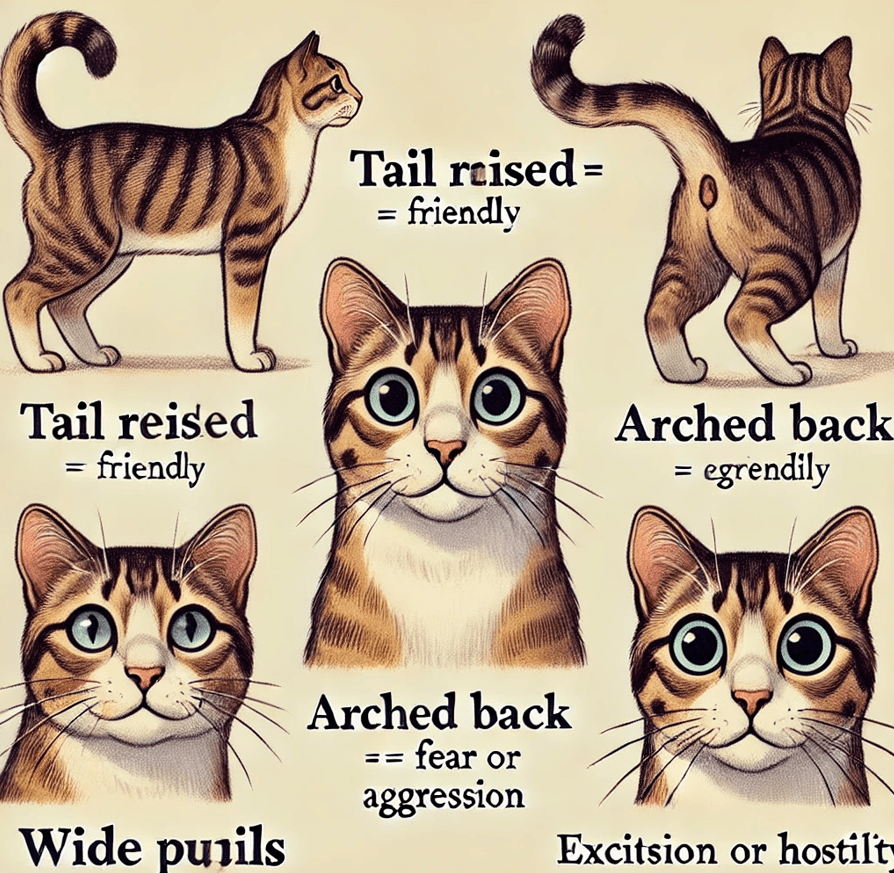
Tail Position:
1.A raised tail shows that the cat stands confident and friendly towards others.
2.When a cat raises its tail upward it shows both fear and anger.
3.Difficult topics or anger make the cat move its tail slowly.
Ears:
1.Cats reveal their interest in something when they show their front-facing ears.
2.Lowered ears suggest a cat means danger or is afraid.
Eyes:
1.Sustained eye closure shows that your cat trusts and loves you.
2.Wide pupils show that the cat feels excitement but also fear and hostility.
Posture:
1.The cat feels pleased and at peace when it rests comfortably on the ground.
2.The cat expresses fear or aggression when it positions its back upward with hair standing straight.
3.Scent Marking: The Invisible Message
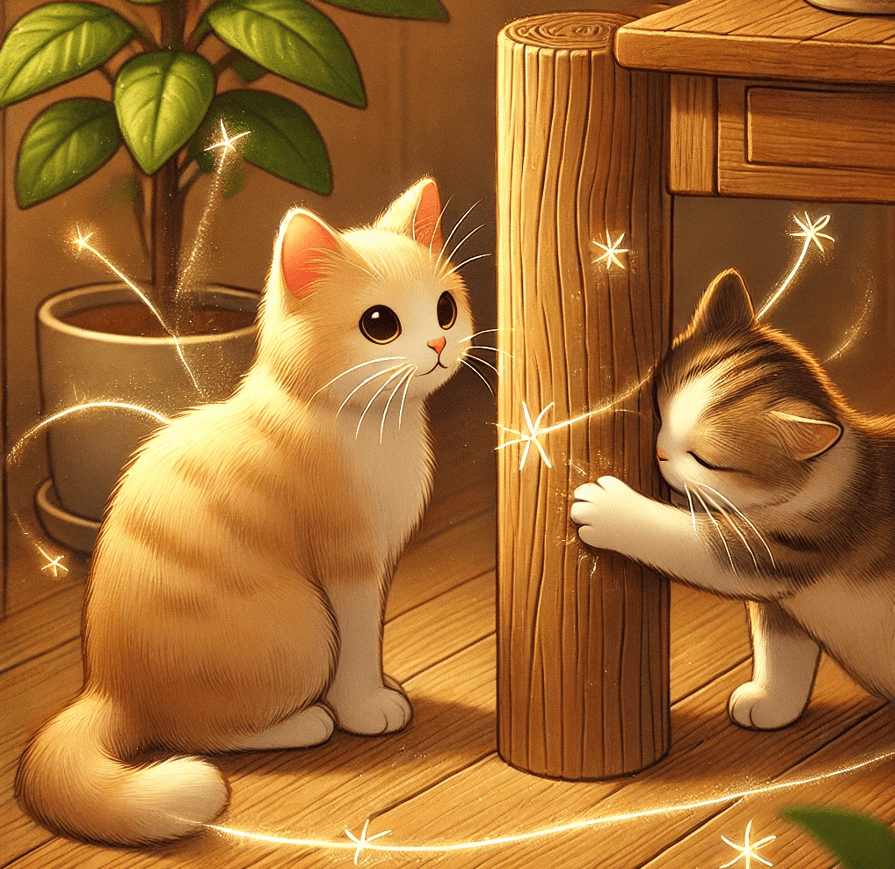
Cats strongly depend on their sense of smell to talk with other cats through scent marking. The feline communication system functions without visible cues. Through these actions cats display their scent marking habits:
1.During a rub session cats release odors from their facial scent glands plus those near their tail and chin. The act of rubbing makes the item both secure for them and appealing.
2.When cats scratch their marks they both sharpen their claws and deposit glands from under their paws as a scent marker.
3.Unsterilized male cats release urine during spraying to indicate their territory and seek mating opportunities. Stressed and anxious cats of both genders spray to mark their territory.
4.Tactile Communication: The Power of Touch
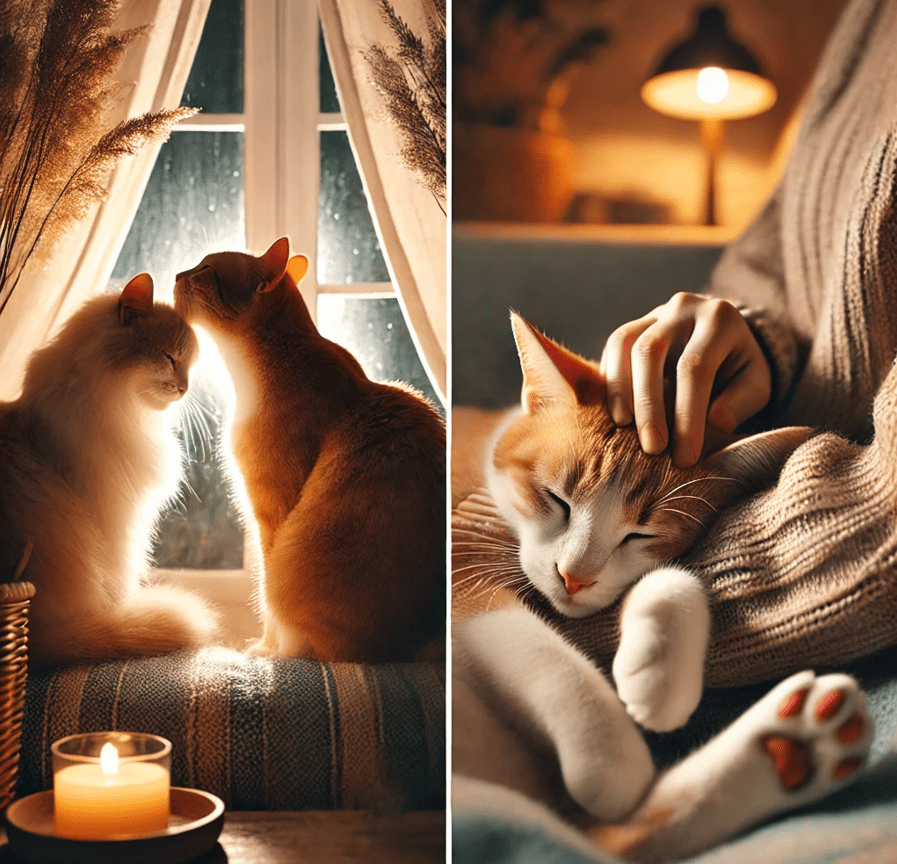
Cats also communicate through touch. Social animals use this form of communication through mutual grooming actions called allogrooming. Through mutual coat-smoothing or allogrooming cats show their social connection. Here’s how it works:
Allogrooming: Cats rub their fur to build alliances and set position ranks in their social grouping. Grooming with their bodies shows how cats trust and care about each other.
Nuzzling: Cats demonstrate affection by lightly rubbing their noses together and also against humans.
Kneading: Kittens display comfort behavior through the act of kneading during breastfeeding because it makes them relaxed. Adult cats express their love by kneading their human companions and other felines.
Real-Life Examples of Cat Communication
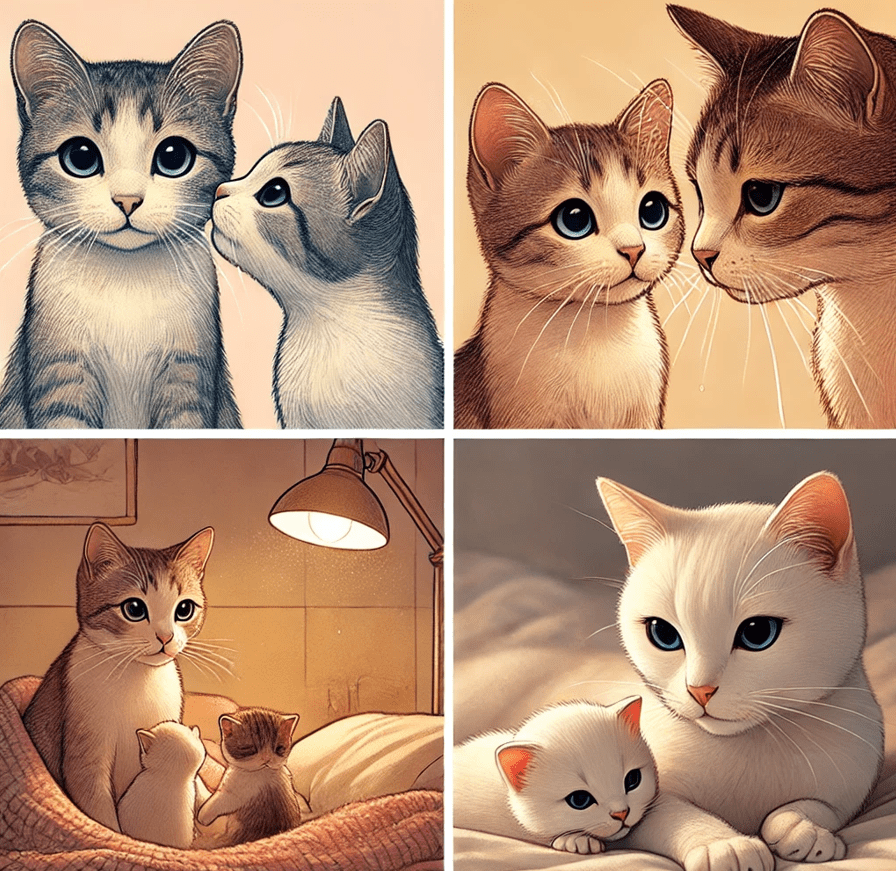
Research into feline communication requires analysis of these real-life situations:
Two Cats Meeting for the First Time: The initial encounter between strange cats involves various guarded actions. The initial encounter between unknown cats usually involves face-sniffing followed by gradual blinks and threatening hisses. The exchange of smells between cats takes place when they rub their bodies together to develop a connection.
A Mother Cat and Her Kittens: Mother cats share their communication with kittens through vocalizations as well as body language and physical touch. A mother cat uses both purring sounds to calm her kittens while she licks for grooming purposes and special calls to call them together.
Territorial Disputes: The possessive nature of cats leads to conflicts because they establish distinct territories. Kittens and adult cats use their body language together with vocal sounds to settle their differences by making hissing and growling noises while displaying arched backs and puffed-up tails.
Why Understanding Cat Communication Matters
The benefits of knowing how cats communicate include several important areas:
Strengthening Your Bond: Your connection with your cat becomes stronger by decoding their signals first and addressing their needs.
Reducing Stress: Identifying when your cat shows stress symptoms gives you a chance to help your pet before problems intensify.
Preventing Conflicts: Your knowledge about how cats communicate will help you keep conflicts between multiple cats from starting.
Improving Health: When your cat acts differently in communication terms it can warn you of their potential medical problems. When your cat stops voicing its usual sounds it might show that something is wrong.
Common Misconceptions About Cat Communication
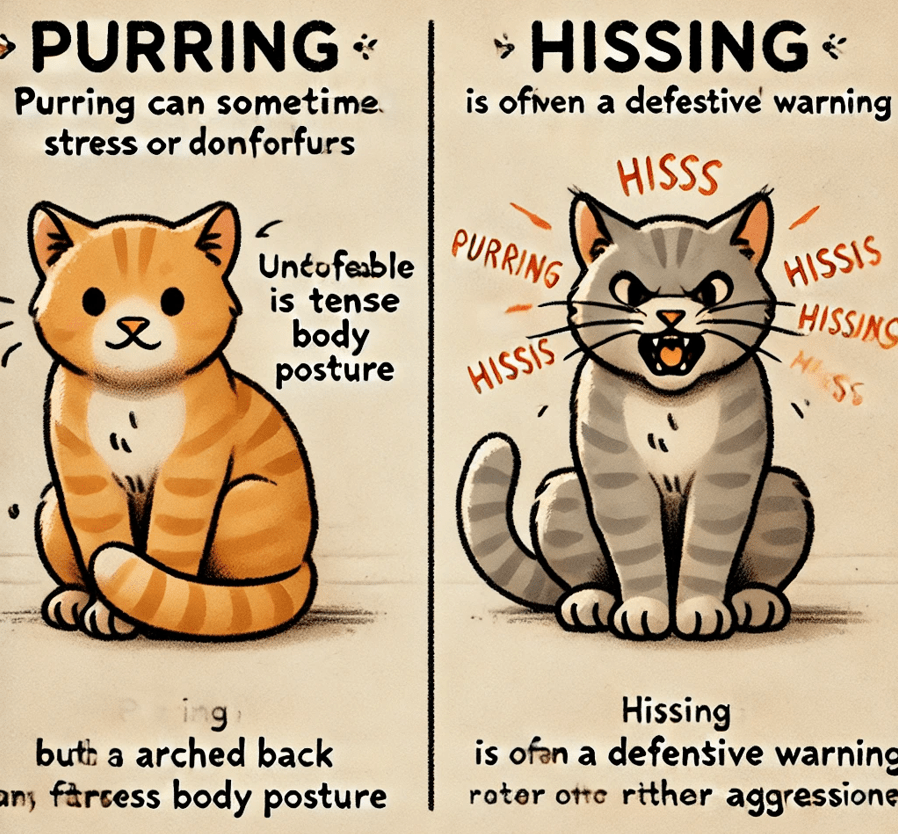
Multiple common ideas about cat communications are inaccurate. Let’s debunk a few of them:
Cats Are Solitary Animals: Although cats seem independent they rely on building connections with both feline and human companions.
Purring Always Means Happiness: Although people think cats purr as happiness signals they actually do it to express discomfort too.
Hissing Means a Cat Is Aggressive: Hissing emerges from a defensive attitude not from aggressive behavior. Cats use purring as a signal to show they want space at that moment.
Tips for Interpreting Your Cat’s Communication
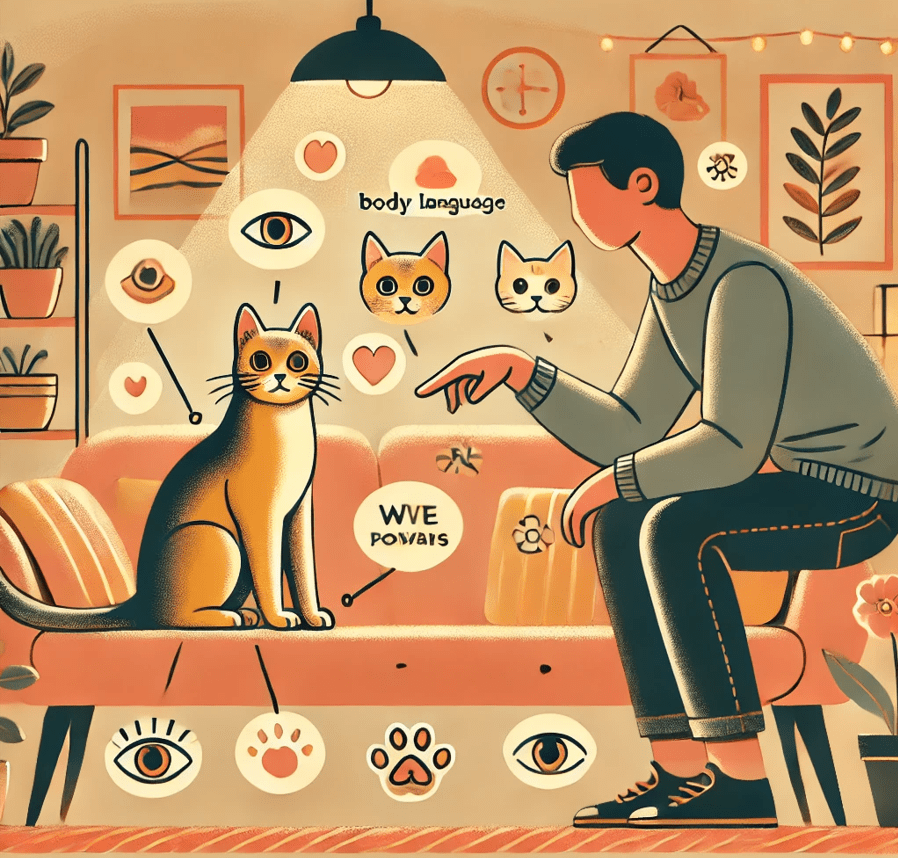
Use these steps to better understand how your cat communicates:
Observe Their Body Language: Watch how your cat holds its tail position together with ear and body pose to read its emotional state.
Listen to Their Vocalizations: Track Vocal Tones because each sound holds a unique communication value depending on its settings.
Respect Their Boundaries: Pay attention to when your cat shows warning signs since growling or hissing requires you to grant distance. When you push cats to socialize they may exhibit defensive or hostile reactions.
Provide Enrichment: A happy environment supports positive channels of communication with your cat. Let your cat enjoy toys while giving access to scratching areas plus playtime.
Final Thoughts
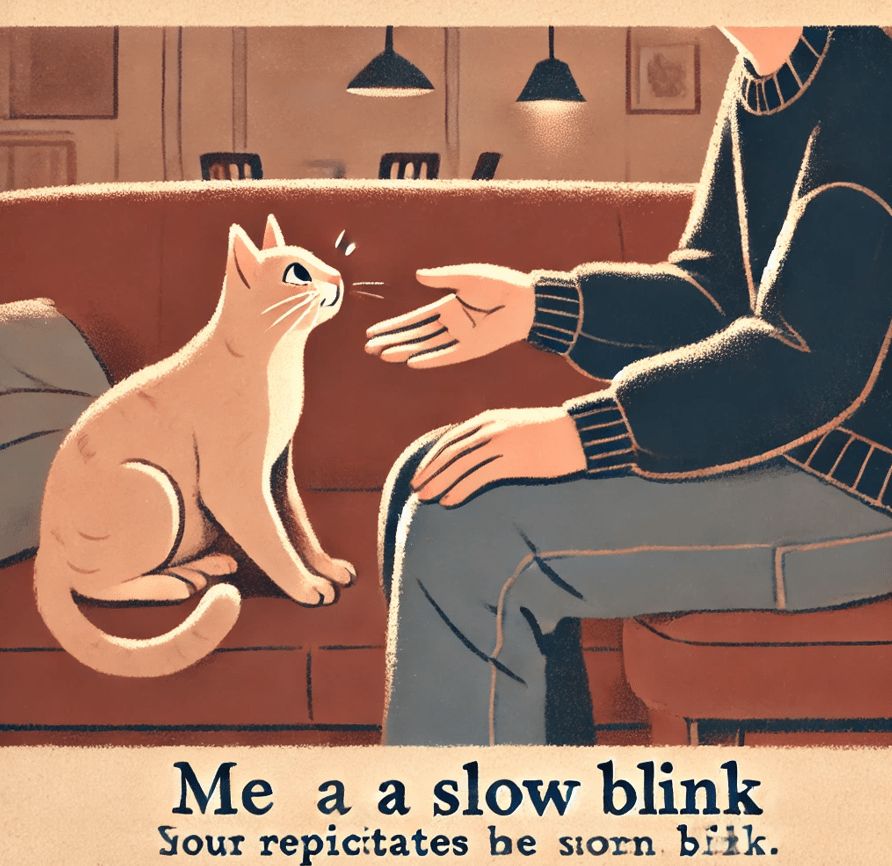
Cats use different ways of communication to show what they need emotionally and behaviorally. Our ability to read feline signals through sounds, body movements, scent markers and touches improves our bond with cats.
Your cat communicates by moving its tail and using physical touch which you can understand now from this knowledge. And who knows? You may end up communicating back in the same way through slow eye blinking when they speak to you.
Now you can talk about cats and their communication system effectively when asked about this topic. A cat’s communication system matches the fascinating nature of these feline creatures.

